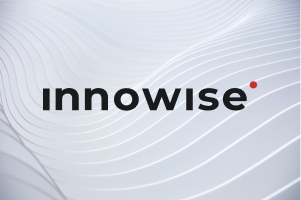Your message has been sent.
We’ll process your request and contact you back as soon as possible.
The form has been successfully submitted.
Please find further information in your mailbox.



In 2026, supply chain leaders sit at the crossroads of shareholder pressure, customer expectations, and regulatory demands. The board expects audit-ready sustainability numbers. Customers want lower emissions with stable service and costs. Regulators set clear rules under CSRD, ESRS, and CBAM. All the while, weather, strikes, and geopolitics disrupt lanes, swinging freight rates and stretching lead times.
Yet the biggest challenge isn’t external shocks; it’s the fragmented, unreliable data scattered across suppliers, carriers, and internal systems. Inconsistent formats and outdated tracking methods make it nearly impossible to measure or improve sustainability with confidence.
This article lays out a practical roadmap for building a resilient and eco-friendly supply chain in 2026. You’ll see how sustainable supply chains run across green, transparent, and circular models. We’ll break down the key actions in supplier selection, procurement, carbon reduction strategies, logistics, waste, and warehouse management. And I’ll show how collaboration, digital tools, and governance turn sustainability from a concept into measurable results.
Sustainable supply chain management integrates environmental, social, and governance principles into how you source, produce, move, and recover goods. It provides visibility from raw materials to end-of-life recovery and acts as a driver of resilience, efficiency, and long-term value. In practice, you pull live data from suppliers, carriers, and warehouses, and use the right digital tools to keep every record accurate and audit-ready.
The 2023 Digital Trends in Supply Chain Survey backs this up. 86% of executives said supply chain strategy is central to delivering on ESG. 79% also noted that digital ESG investments are already strengthening their supply chains. Yet many still lack the core digital capabilities to deliver fully.
From my experience, the easiest way to make sense of sustainability in supply chain practices is to look at it through three connected lenses: green, transparent, and circular supply chains.
Now, let’s break down each one in more detail.
A green supply chain is about reducing emissions, waste, and resource use at every stage of a product’s life. It starts with how you design the product, choose materials, run manufacturing, ship goods, and handle returns. Some of the biggest wins come from practical moves such as working smarter to develop delivery routes that reduce fuel consumption, using low-impact packaging, using renewables in warehouses, and designing products to be disassembled and recyclable.
Definitely, technology, especially AI, can be a powerful instrument for spotting barriers or hotspots. But I always stress this point with clients: your AI is only as good as the data you feed it. That means getting your master data in order and making sure your processes are reliable is non-negotiable.
Once your data is good, you get incredible results from AI. A great example is Uber Freight, which uses AI to match trucks with loads to minimize empty miles. By including real-time components such as traffic, weather, or road conditions, they have reduced empty hauls by 10-15%, decreased carbon emissions and fuel wastage, and increased overall fleet utilization.
A transparent supply chain means sharing clear, verified information on product origins, production methods, and applied standards. Many companies set ethical and environmental targets, but delivering them end-to-end is difficult when data is scattered and suppliers operate remotely. Digital tools such as blockchain and RFID now make it easier by creating accurate, auditable records of products and suppliers throughout the journey.
Volvo’s battery passport, launched in 2024 on the EX90 SUV, is a strong example. It uses blockchain to trace cobalt, nickel, and lithium from mine to car, while tracking carbon footprint, recycled content, and chain of custody. All details are accessible via a QR code inside the driver’s door, putting Volvo ahead of the EU rule that will require similar passports from 2027.
In a circular supply chain, a company instead keeps products and materials in use rather than discarding them. They recover parts, recycle materials into raw forms, and remanufacture parts back into goods for resale. This approach reduces environmental impact, protects margins, and limits reliance on virgin resources.
The model relies on practical tools. Advanced analytics help plan reverse logistics routes. Digital IDs on parts and materials make tracking easy, connecting returns directly to inventory and production systems. Material passports guarantee recyclables are properly identified. In some industries, 3D printing with recycled plastics allows replacement parts to be produced on demand. Circular design principles strengthen the system by making products easier to take apart, standardizing components, and planning recovery right from the design stage.
IKEA’s buy-back and resale program shows the potential. By the end of fiscal 2024, over 2,700 products in the U.S. were eligible, extending their life, connecting returns directly to store inventory, and making refurbishment a consistent, scalable process.
Green, transparent, and circular ideas give you the big picture. To make them count day to day, you need practical actions that actually lower emissions, strengthen resilience, and keep you onside with compliance.
Next, we’ll look at 6 key elements to build a sustainable supply chain.
The suppliers you choose are the basis of your entire supply chain. Their emissions, labor practices, and data quality become a direct part of your corporate footprint. Under the CSRD and the upcoming CSDDD, you are legally responsible for impacts far beyond your immediate, or tier 1, suppliers. Picking the wrong partner means inheriting significant compliance and reputational risks that are costly and slow to fix.
To manage this proactively, embed sustainability criteria into your RFQ from the start. Ask for verifiable environmental policies, emissions data that aligns with your Scope 3 reporting, evidence of ethical labor standards, and a firm commitment to share accurate data consistently. Many companies now use ESG self-assessments based on ESRS as a first filter before a supplier even reaches the shortlist.
The Zero Carbon Project from Schneider Electric is a strong example of developing a sustainable supply chain strategy. They work with their top 1,000 suppliers to set strict climate targets. By the end of 2024, these suppliers had achieved a 40% reduction in their operational emissions, with support from Schneider Electric through training and a transition to renewable energy. The program functions as both a qualification gate and a collaborative driver for Scope 3 reductions.
Responsible procurement means making purchasing decisions that support your sustainability goals. It goes beyond price and lead time. Every purchase carries an environmental and social footprint. Under CSRD and the upcoming CSDDD, you will need to show that your procurement policies actively reduce negative impacts and promote ethical, sustainable supply chain practices.
The starting point is integrating sustainability KPIs directly into your procurement policy and contract terms. Specify requirements for low-carbon materials, recycled content, ethical sourcing certifications, and supplier diversity. Build these criteria into your approval workflows so they are mandatory. For high-impact categories, require LCAs or third-party verification before signing contracts.
Regulators now expect you to cut and report supply-chain carbon. CSRD requires Scope 1, 2, and 3 emissions data that can pass an audit. CBAM adds a fee to carbon-heavy imports. Every tonne you remove, whether in your operations or with suppliers, reduces both compliance risk and direct costs.
The quickest wins come from knowing your biggest emitters. For most businesses, that’s energy-hungry manufacturing, long-haul transport, and high-impact raw materials. Build a verified baseline, then focus on these hotspots. Set reduction targets in supplier contracts and require regular, standardised emissions data.
Make carbon reduction part of day-to-day operations:
For instance, my team built an AI logistics platform for a major EU carrier that used GIS and machine learning to optimise routes. With telematics and fuel data feeding the system, emissions fell by 20% across the network. The platform tracks carbon per delivery, fuel use, and reduction rates, producing audit-ready reports that satisfy CSRD requirements without slowing operations.
Logistics is often the most visible sustainability challenge and one of the hardest to decarbonize. Under CSRD, emissions from inbound and outbound transport fall squarely into Scope 3 reporting, which means carriers and freight forwarders become critical data partners. Without verified emissions data from these partners, your disclosures will be incomplete and potentially non-compliant.
The fix starts in your contracts. Spell out exactly what you expect: cleaner transport modes, better fuel efficiency, and verified emissions data for every shipment. Make it part of how you choose carriers, not a “nice to have” later on.
Here are moves that work in the real world:
Say, in 2024, DHL expanded its GoGreen Plus service across various regions and sectors, focusing on Sustainable Aviation Fuel (SAF) to reduce carbon emissions. This expansion included partnerships with companies like Google and United Overseas Bank, and an increase in biofuel-powered trucks for events like Formula 1. The service also uses a book-and-claim approach, allowing customers to reduce their Scope 3 emissions by using SAF, even if their shipments aren’t physically transported using it.
Waste reporting isn’t optional anymore. Under ESRS E5, you need to track what comes in, what goes out, and what’s thrown out and explain what you’re doing about it. That includes your targets, actions, and the financial impact. Clean categories and reliable site-level data keep your numbers audit-ready and help avoid compliance headaches. The good news is that most of this comes down to smart, everyday choices baked into your operations and contracts.
So, build it into policy and contracts. Use right-sized packaging. Choose materials that are recycled or reusable. Ask suppliers to take back transit packaging. If your routes allow, standardize returnable totes and durable pallets. Inside plants and warehouses, map where scrap builds up, then lock fixes into your SOPs and KPIs so it actually sticks.
Also, I suggest you run the basics well:
In June 2024, Amazon replaced 95% of plastic air pillows in North America with paper filler and moved to eliminate nearly 15 billion plastic pillows annually. The shift cut single-use plastic, improved recyclability, and supported lighter, right-sized parcels for transport. The company paired the change with data reporting that feeds its annual sustainability disclosures.
Warehouses are easy to overlook, but they carry serious weight when it comes to energy use and emissions. Lighting, heating, cooling, equipment, it all adds up. And under ESRS E1 and E5, you’re now expected to report on energy efficiency and resource use at the facility level. That means your warehouses need to be in the picture, not out of sight.
Start with the basics. Retrofit LED lighting, install smart HVAC systems that don’t blast heat or cold when it’s not needed, and add solar panels if the roof can handle it. Use IoT sensors to track energy and water use, then feed that data into your dashboards so you can spot problems before they get expensive.
On the floor, small changes go a long way. You need to tighten up storage layouts to reduce forklift travel and improve pick paths. Also, it’s a good practice to electrify material handling equipment where possible and monitor charging patterns to avoid wasting power. All of this brings down emissions, especially Scope 2, and cuts cost per unit handled.
Here’s one example that shows what’s possible. In June 2024, A.P. Moller Maersk opened a low-GHG emissions warehouse at Taulov Dry Port in Fredericia, Denmark. The site is certified to BREEAM Excellent standards and designed for zero direct emissions from operations. It uses rooftop solar panels with surplus energy fed back to the grid, electrifies all indoor and outdoor handling equipment, and runs shunting with battery-electric trucks. The facility also supports fleet decarbonization with 41 EV charging outlets on site. Located within a multimodal transport hub, the warehouse further reduces logistics emissions by minimizing unnecessary truck journeys, and its design enables clear facility-level reporting on Scope 2 reductions under ESRS E1.
Every part of the playbook, from supplier choices to warehouse upgrades, each one reinforces the others. Creating a sustainable supply chain isn’t a patchwork of fixes. It’s a system where every decision, contract, and process pushes in the same direction and backs up your ESG commitments.
When you build that kind of system, you’re creating a supply chain that’s more resilient, more efficient, and fully aligned with CSRD and CSDDD.
A sustainable supply chain works when every link pulls in the same direction. It’s built on collaboration with partners, smart use of technology, shared standards, and open communication. Together, these elements turn sustainability from a box-ticking exercise into real impact, and they create an edge in the market.
Global supply chains are deeply interconnected. Many major companies rely on the same raw materials and lower-tier suppliers, which means one weak link can create risks for everyone. That’s why collaboration is becoming a competitive advantage. Shared audits, industry-wide databases, and joint improvement programs help companies reduce duplication and send a stronger signal that compliance is non-negotiable.
Fashion Transparency Index proves this point. When leading brands collaborated, visibility across supply chains improved significantly. Far from weakening competitiveness, collaboration built resilience across the entire sector.
Sustainability runs on data, and the only way to get reliable data is through integration. Modern cloud ERPs and AI-driven supply chain tools now link sourcing, logistics, and manufacturing into a single real-time view. With this setup, managers can track Scope 3 emissions, optimize transport routes, and anticipate risks in ways spreadsheets never could.
Take Unilever, for example. The company uses AI platforms to sift through supplier sustainability data at scale. This way, procurement teams gain sharper insights and speed up progress toward their net-zero targets.
Sustainability only works when everyone’s working toward the same benchmarks. Clear standards for emissions, labor practices, and audits keep suppliers and partners aligned. Digital compliance tools and global frameworks like the Science Based Targets initiative (SBTi) help turn these goals into action across the chain. There’s a financial edge too: companies with stronger ESG records increasingly show higher growth and lower capital costs.
Progress only counts when people can see it. Transparent reporting, supplier scorecards, and regular sustainability updates turn improvements into something tangible for regulators, investors, and customers. Sharing results builds trust and shows stakeholders that commitments are more than words on a page.
The best players treat communication as part of the system. IKEA, for example, openly reports on circularity and renewable sourcing, using hard numbers to back up its claims. That level of visibility has made supply chain transparency one of its brand strengths.
SCM sustainability changes the fundamentals of supply chain management. It reshapes how networks are designed, how investments are justified, and how performance is measured. It brings new constraints and trade-offs that don’t go away with small adjustments. For most companies, the real work lies in redesigning networks, reworking processes, and resetting incentives. The biggest hurdle isn’t technology, as the tools already exist. It’s alignment. Decisions, governance, and ingrained habits are what slow adoption.
Is sustainability profitable? That’s the question most CFOs ask first. The tension is obvious: payback expectations are short, but the real benefits of sustainability usually unfold over several years. Switching to renewable energy, redesigning packaging, or investing in smarter data systems often feels like an extra cost upfront. But the return comes through fewer disruptions, more stable energy bills, avoided penalties, and better economics once you scale.
Scope 3 is where the bulk of emissions hide, and the data to measure it usually sits with suppliers or logistics partners. The challenge: systems rarely connect, definitions vary across regions, and what you get back often can’t be tied to real activity. That makes reporting painful and assurance teams skeptical.
In logistics, efficiency is usually measured by speed, cost, and service. Sustainability adds another dimension: slower modes, smaller batches, or packaging redesigns that can feel like friction. The real challenge is not choosing between efficiency and responsibility, but redefining efficiency so carbon and resource use are built into the baseline metrics.
Most supply chains weren’t built with sustainability in mind. They were built to move fast and keep costs low. So fixing them often means going deeper than surface-level tweaks. That could mean rethinking supplier networks, redesigning transport flows, or changing how performance gets measured. It’s disruptive, and not everyone will be on board.
The bigger challenge is mindset. Some leaders are still wired for efficiency at all costs. Teams are attached to KPIs that made sense five years ago. Suppliers push back when asked to hit higher standards or share more data. If you don’t confront that resistance directly, the work stalls.
“CSRD and CSDDD make companies accountable for ESG impacts across their supply chains. That demands reliable supplier data, traceability, and collaboration. At Innowise, we help our clients build supply chains that stay compliant, measurable, and resilient.”
Getting started with sustainability in your supply chain can seem overwhelming. But the truth is, you don’t need to flip your entire operation upside down on day one. What you do need is a structured approach, leadership commitment, and metrics that prove whether your actions are working. Here’s how my team usually frames the first steps.
Start with a single-page view of your supply chain. Lay out the key suppliers, facilities, lanes, and handoffs from raw materials to end delivery. Mark, who owns each step, what data you have, and where the gaps are.
Set ground rules early. Create a supplier code of conduct with the essentials: fair labor, site-level emissions data, audit rights, and no greenwashing. Be specific: name the sites, set reporting cycles, and include improvement targets.
Don’t aim for full visibility on day one. Map tier 1 in full, then go deeper only where it matters most. Use spend, emissions, and risk to prioritize. Focus on site-level data so you can assess real exposure to climate, compliance, and reputational risks.
Keep your outputs lean and practical:
One manufacturer we worked with discovered that nearly half of its carbon footprint came from tier-2 suppliers rather than its own plants. That insight reshaped the strategy, moving investment from factory upgrades to supplier programs, and the return was far higher.
Don’t try to do this in a vacuum. The earlier you bring people in, the smoother it gets. Procurement, operations, finance, sales, your key suppliers, and even your 3PLs shape how the supply chain runs. If they’re not aligned, the plan won’t stick.
Expect pushback. Some will see an extra workload, others will worry about cost or service levels. That’s normal, and it’s better to address it early than after budgets and commitments are locked in.
Try this:
Stakeholders are the ones who’ll make or break implementation. Align them early, and you’ll avoid costly stalls later.
A common failure point is goals that stay hidden in slide decks. Transparency is what makes them real. Employees and partners need to know not just the targets, but the rules you’ll hold them to.
Cutting carbon by 20% is a goal. Telling suppliers you will track transport emissions quarterly, and giving them the reporting template, is an expectation. The difference is clarity and accountability.
Treat it like project governance. Clear, fair, and consistent ground rules reduce friction and make execution smoother.
The old line is true: you can’t improve what you don’t measure. But the trick is not to drown yourself in data. A handful of KPIs that actually drive behavior beats a wall of numbers no one looks at.
When we work with clients, here’s the pattern that works best:
If you do nothing else this quarter, build the map and start measuring. Everything else, communication, alignment, process tweaks, builds on that foundation.
AI lets you analyze massive, disconnected data sets across your entire supply chain and turn them into actionable decisions. One of the strongest use cases in sustainable logistics is synchromodality: using real-time data to shift between transport modes on the fly. If a delay opens up extra time, you can move from road to rail or consolidate shipments mid-route, reducing emissions without hurting service.
Machine learning takes this further by detecting patterns and improving decisions continuously. It can predict delays, optimize warehouse energy use, or flag waste in packaging. For supply chain leaders, the result is less manual firefighting, more automation, and clear reductions in cost, fuel, and resource use.
With demand for fast delivery pushing warehouse operations to the edge, automation is now essential. In 2024, 77% of EU internet users bought something online. That kind of volume puts real pressure on logistics and energy systems.
Drones, automated guided vehicles, and inventory robots now help optimize how goods move through warehouses and last-mile networks. When combined with smart energy systems, they also help reduce electricity and fuel use, especially when they’re scheduled based on real-time data.
Additive manufacturing, or 3D printing, shifts production closer to demand. Instead of shipping goods across continents, companies can hold digital inventories and print parts on-site when needed. That reduces transport emissions, packaging waste, and reliance on fossil fuels in long-haul logistics.
The technology also supports circularity. Recycled plastics and other recovered materials can be fed back into the printing process, turning waste into usable stock. For supply chain leaders, additive manufacturing means leaner inventories, lower shipping costs, and measurable sustainability gains.
Smart sensors and connected devices turn equipment into real-time data sources. By tracking usage, energy consumption, and wear, IIoT lets you act before inefficiencies become breakdowns.
The payoff is higher machine uptime, fewer idle hours, and lower energy waste. Instead of reactive maintenance and costly downtime, you get a supply chain that runs leaner, more predictably, and with less environmental impact.
Sustainable supply chains generate massive amounts of data: energy use, emissions, compliance, and supplier performance. Without integration, that data stays fragmented.
Modern ERP systems and real-time databases solve this. They integrate data from procurement, logistics, production, and partners into one real-time system. That makes advanced analytics and automation actually usable.
For example, you can run predictive models on energy demand, track supplier performance against ESG criteria, or simulate how route changes affect both costs and emissions. Finance teams can link sustainability metrics directly to ROI, instead of treating them as separate reports.
The result is a supply chain that’s transparent, measurable, and easier to steer with sustainability baked into day-to-day decisions.
In 2026, AstraZeneca’s Alexion unit shifted all international air freight in Ireland to sustainable aviation fuel (SAF) through DHL’s GoGreen program, cutting well-to-wake emissions on those routes by over 80% compared to conventional jet fuel.
At the same time, AstraZeneca launched a UK biomethane plant capable of supplying 100 GWh of renewable gas annually to its R&D and manufacturing sites. This move replaced fossil gas, stabilized Scope 1 emissions, and strengthened long-term energy resilience.
Walmart launched Project Gigaton in 2017 to reduce, avoid, or sequester 1 billion metric tons of greenhouse gases across its value chain by 2030. The target was met nearly six years early. By early 2024, suppliers had already passed the gigaton milestone. Over 5,900 suppliers participated, making it one of the largest private-sector climate action initiatives.
Even after hitting the milestone, Walmart is continuing and expanding Project Gigaton to stay on course toward its broader goal of zero operational emissions (Scopes 1 and 2) by 2040.
Building a sustainable supply chain takes discipline: map it, involve the right people, set expectations, track results, and apply technology to cut waste and emissions. It’s steady work that delivers lasting results.
If you’re ready to move from ideas to action, our sustainability consulting team can help. We’ll assess your current processes, pinpoint where energy and resources are being wasted, and design practical improvements to make your supply chain more efficient and resilient.

Head of Sustainability
Stanislav brings real-world thinking to sustainability in tech. He helps clients move past checkboxes and into actual results — whether that means optimizing infrastructure, reducing waste, or building digital products with impact in mind.












Your message has been sent.
We’ll process your request and contact you back as soon as possible.

By signing up you agree to our Privacy Policy, including the use of cookies and transfer of your personal information.